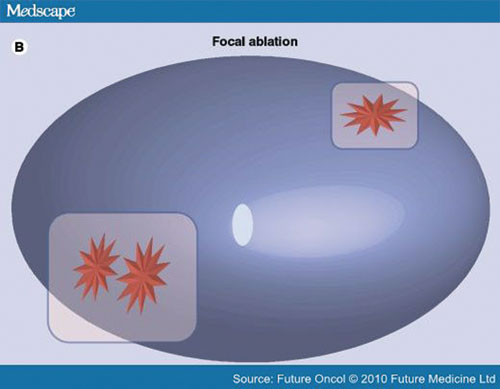When a prostate biopsy is performed, tiny thread-like “cores” are obtained through the tip of a needle attached to a biopsy gun. These tiny specimens are sent to a highly trained pathologist to examine the tissue under a high-powered microscope. The appearance of prostate cells and their architecture help determine the presence or absence of… Read more »
Prostate Health
Clinical Trial Subject Perspective
- By Lauren Del Sarto
- November/December 2014
We previously published Understanding Clinical Trials (July/Aug 2014) featuring an interview with Don Anderson, MD, principal investigator at Desert Valley Research. As a follow-up to that story, Desert Medical Imaging presented a client, Ed Dykstra, who wanted to share his story from the perspective of a clinical trial subject. Following is our interview with Ed:… Read more »
To Screen or Not to Screen? That is the Question
- By John F. Feller, MD, and Bernadette M. Greenwood, BSRS, RT(R)(MR)
- September/October 2014
Making a decision to be screened for certain medical conditions can be difficult, especially when the recommendations and guidelines are constantly changing. September is Prostate Cancer Awareness Month and October is Breast Cancer Awareness Month, so it is timely to review the recommendations of various organizations for both of these conditions. What is a screening… Read more »
Multiparametric MRI for Early Detection and Active Surveillance of Prostate Cancer
- By John F. Feller, MD
- September/October 2013
Prostate Cancer is the most common cancer in men with 1 in 6 men being diagnosed with the disease at some point in their life. Like any cancer, early detection of prostate cancer gives the patient more options for managing or treating their disease. Currently, the most widely used screening tools for prostate cancer are… Read more »
Prostate cancer is the most common non-skin cancer in men. About 240,000 American men are diagnosed with prostate cancer each year, and in 130,000, the cancer is localized and low-risk. Although most prostate cancers are slow growing and unlikely to spread, most men receive immediate treatment with surgery or radiation. These therapeutic strategies are associated… Read more »
If you have prostate cancer, your current options for therapy include sitting back and waiting to see if the cancer grows (active surveillance), total removal of the prostate gland, or radiation therapy of the entire prostate gland. The second and third options often results in life-altering side effects such as erectile dysfunction (in up to… Read more »
Prostate cancer is the second most common cancer in American men (next to skin cancer) and 1 in 6 will be diagnosed within their lives. These odds are high and it is likely you know someone who has been diagnosed – or who has been told they have an ‘elevated PSA ’ but no confirmation… Read more »
News by Category
- Addiction
- Allergies
- Alzheimer’s
- Arthritis
- Bladder Health
- Book Reviews
- Brain Health
- Breast Cancer
- Cancer
- Cannabis
- Children’s Health
- Community Health
- Dental Health
- Diabetes
- Digestive Health
- Ear Health
- Eye Health
- Feet
- Fertility
- Functional Medicine
- Gluten Free
- Health Academies
- Heart Health
- HIV/AIDS
- Home Health
- Hormones
- Inspiration
- Lauren’s Cancer Journey
- Meditation
- Mental Health
- Modern Modalities
- Nutrition
- Orthopedics
- Pain Management
- Parkinson's
- Pet Health
- Plastic Surgery
- Preventative Health
- Prostate Health
- Recipes
- Regenerative Health
- Restaurant Reviews
- Self Improvement
- Senior Care
- Sexual Health
- Skin Care
- Sleep / Fatigue
- Traditional Chinese Medicine
- Weight Loss
- Yoga
- All Categories

